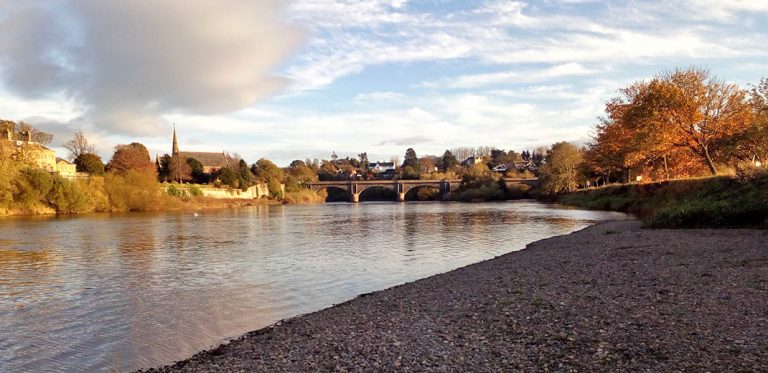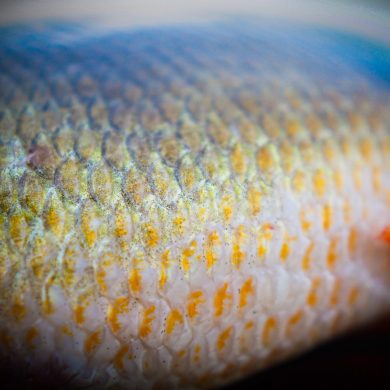I have had the privilege of fishing one of the classic salmon rivers of Scotland. Not merely that but on its best and world-famous beat. I realise that although those statements are accurate they appear boastful so let me mitigate the effect by admitting straight away that despite the truth of them I did not catch a salmon upon it.
I have also had the pleasure of fishing one of its allegedly “poor relations” – the Nith. Ironically on that river I had much better success.
Kelso is to salmon fishing what St Andrews is to golf. Not merely does the Tweed run through it the Junction Beat, at the confluence of the Tweed and Teviot, is situated in the town centre. You can stand on the road bridge and observe fortunate rods, aided by experienced boatmen, extracting salmon from its pools and runs.
The hotels of Kelso and the adjoining area cater for the fishing fraternity none more so than Ednam House. It is everything that you would expect of a fishing hotel with the wall covered with pictures of angling triumphs and fishing legends from the past. Early one November many years ago I persuaded my wife to come on a “week end away” at that hotel. Fishing was not on the agenda for us and in fact although it was peak season there were few anglers staying in the hotel. I had anticipated that it would have been overcrowded with them and that, each evening, as was then the practice the hallway would be overflowing with the salmon caught by guests on the various beats in the vicinity. However, there was a very good reason for the absence of anglers and fish. The river was overflowing its banks in a dirty brown flood and fishing was impossible. Most had accepted the inevitable and returned home. Nonetheless we had an enjoyable stay and I spent quite a bit of time on the bridge fantasising about fishing the Junction whilst realising that even if there was ever availability which was extremely unlikely, I could never afford the “Kings Ransom” necessary to acquire it.
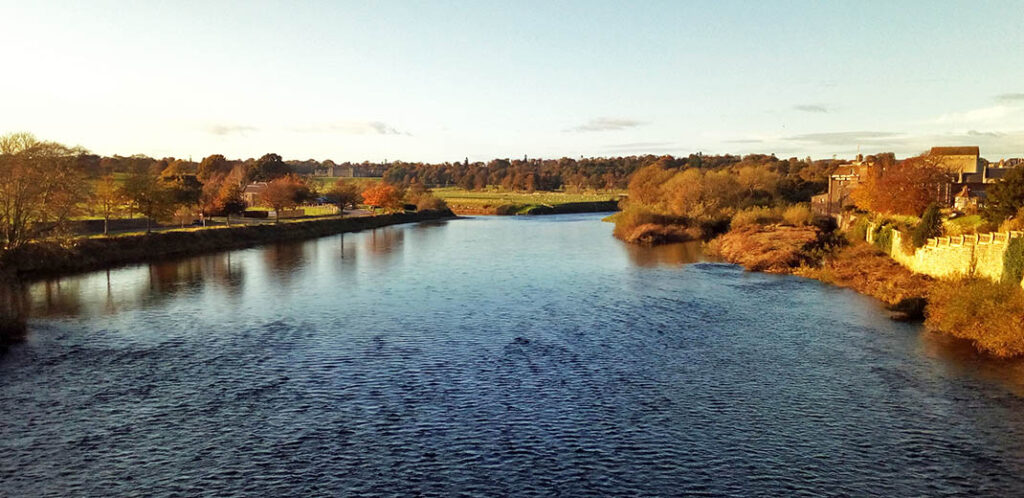
It was one of those curious twists of fate that, a few years thereafter, I was stood not on the bridge but on the veranda of the Junction Beat Hut surveying as “Tenant” the water available for the exclusive use of myself, my brother and his step son. No there was no lottery in those days, I had not won the football pools and there had been no change for the better in my financial circumstances. It was not November (or September or October for that matter) but it was the 24thJuly which happened to be my birthday. I had been permitted a treat which was a day on the Junction. At that time and I think only for a year or two, the beat was not tenanted in the normal way in July and could be acquired for the day for a very modest outlay which in my case was £30 for all the rods. It was an ideal opportunity to fulfil an otherwise unattainable ambition to fish such hallowed waters.
Obviously we did not have the services of the boatmen but we were met promptly and in a welcoming manner by the Head Boatman who took the trouble to show us round the whole of the beat and to give us some helpful advice as to where it would be best to concentrate our efforts in the prevailing low water. I left the others to fish the morning on the junction pool proper and concentrated my efforts on the streamy flows of “Hempseedford” some way below. I saw a few fish and on the first run down with a small stoats tail connected with and landed a sea trout of about two pounds. It was however, the only catch of the day.
We ate luncheon at the hut, in style, with a bottle of wine and a good malt. On looking round I was surprised to find in a corner a large tub of what seemed to be moss but which on further examination also contained a large quantity of fresh lob worms . I did not associate the Junction with worm fishing and was not sure that it was permitted. Had they been supplied as a service by a thoughtful boatman or left by unscrupulous anglers? The prospect of being evicted for breach of the rules or worse still prosecuted in the Sheriff’s Court was unthinkable and we left them well alone fishing only the fly and spinner in the streamy water below the weir and the bridge.
It may have been a blank but it was a wonderful day. Perhaps more skilful anglers could have done better. Interestingly, on the same day, a friend of mine took Sprouston on similar terms and caught two salmon one 10 pounds and the other 6.
I have only fished occasional days on other beats of Tweed since then all enjoyable but not particularly successful.
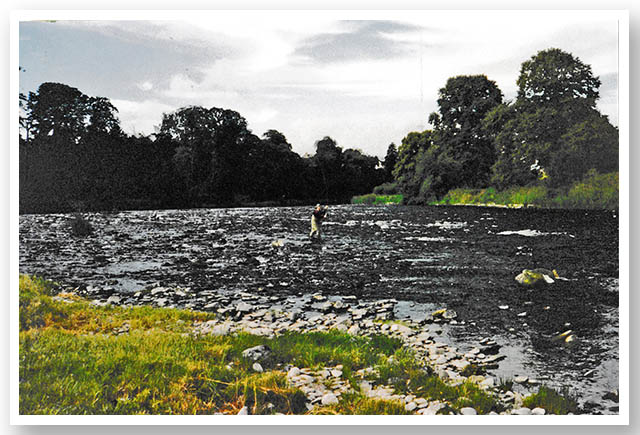
In my early days of salmon fishing I was very keen and whilst I had fishing throughout the season on the Eden in Cumbria it seemed a long time between the close of the season in mid October and the opening the following January . Some rivers in the Borders went on until the end of November and were within comparatively easy reach for a days’ fishing. Sometimes you find good fishing by diligent investigation and enquiry but sometimes it is purely luck. We visited the Dumfries area quite regularly and just as Tweed flows through Kelso the Nith flows through Dumfries. When conditions were favourable, you could see a line of anglers on the wall of the “Wee Green”. One Saturday we were enjoying a bar lunch at the Auldgirth Inn which was near the river just a few miles upstream of the town. I noticed a couple of anglers and went across to speak to them and to admire the salmon that they had caught which was lying on the bank. . They were locals who knew the river well, told me about the beat they were fishing (Dalswinton) and gave me the address of the estate office from where it might be possible to obtain a day ticket.
Dalswinton was and is still a lovely beat. It extends to some 2 ½ miles of the left bank downstream from Auldgirth. At the time I fished it was an “all methods” fishery but it provided such a variety of good fly water that I never felt the need to fish it any other way. There are some restrictions in force today .I think it was then a mixture of season rods and day tickets and although it was inevitably quite heavily fished overall the anglers were friendly co-operative and good company. The fact that there was “opposition” on the other bank was only a real problem on one of the better lower pools” Ellisland” where at times some visitors from Europe insisted on fishing the shrimp in stationary positions throughout the pool and studiously refused to move downstream between casts. In the end you just had to be hard- nosed and fish through them regardless. I fished the beat happily for a few years for odd days between the middle of October and the end of the season. It was, of course, late in the season and fresh fish were few and far between but one of the justifications for allowing fishing so late was the existence of what were called “Grey Backs”. There was some debate about the matter but these were, arguably, big fish that ran from November but were, effectively, premature springers in that they were fish that did not spawn until the autumn /winter of the following year. I am not a fish scientist or marine biologist and I have never caught one. However I saw one that had been landed by another angler in the latter weeks of the season. About 15 pounds, pristine, positively gleaming, sea liced it flanks as hard as iron and vent fully closed. I find it hard to believe that it was a fish that would have spawned in the next few months but I leave it to others better qualified than me to decide.
Such was the demand that, in the first year, I was only able to obtain one ticket for a day in the last week of the season. Conditions were not favourable, bitterly cold with very low clear water and the lack of prospects were best indicated by the fact that not only were there no anglers on the “Wee Green” when I passed through Dumfries nor I did not encounter any on the beat throughout the day.
In the morning I made the best of it fishing a small Stoats Tail Waddington on a sink tip. It was so cold that the rod rings froze up periodically. I saw quite a few stale fish some with fungal disease on them but the only excitement was what seemed to be a firm take in the Island Run which disappeared when I raised the rod. By mid afternoon it had warmed up somewhat and I was down at Ellisland where the deeper water at the head of the pool persuaded me to change to a slow sinker with a 2” Willie Gunn Waddington. Hand lining on the dangle resulted in an immediate take of such eagerness (my diary tells me) that it pulled the rod tip down into the water. After a short but active fight I netted out a 14 pound cock fish needless to say not fresh run but still silvery. This was the biggest salmon that I had caught to date and given that it was my first day on the beat I was feeling particularly pleased with myself! It remained by biggest fish for precisely 5 minutes after which, in what seemed to me to be the same lie, I connected with another big dour fish which although it did nothing exciting took me quite a long time to land and which turned the scales to 20 pounds. With the benefit of hindsight it should have gone back but, in the excitement of the moment, sadly it did not. For me as an inexperienced salmon fisherman it was sheer elation, a result beyond my wildest dreams but there was nobody on the beat with which to share the triumph. I am rather embarrassed to admit that, so proud was I of my achievement that, on the way home, for the first time, I called into the tackle shop in Dumfries and purchases a set of scales so that I could weigh the fish. I insisted on recounting to the owner in considerable detail the events that had occurred but a short time before. He listened with polite interest but I am not sure that he really believed me. I stopped in a lay bye in the dark and weighed the fish under the headlights of the car. It must have looked very odd to any passing motorists!
I had moderate success from time to time on Dalswinton but nothing that approached the excitement of that first visit.
These two rivers provided very different experiences yet both immensely enjoyable and part of the rich tapestry of a fishing lifetime.
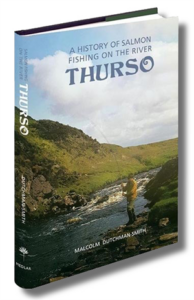
Malcolm Dutchman-Smith is the author of A History of Salmon Fishing on the River Thurso
You can read our book review and how to buy yourself a copy HERE.

